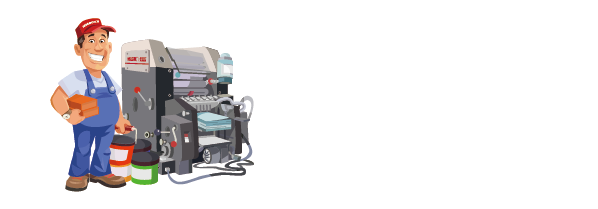Printing Industry
For professionals who have been engaged in printing for a long time, some printing errors are objective and impossible to avoid. However, for customers who receive printed matter and play a decisive role in the acceptance of finished products, sometimes they do not fully understand these errors. As a result, after the dispute, the communication between the two parties was very difficult. The customer thought that the finished product of the printing factory was unqualified, but he was looking for excuses and unreasonable sophistry; the printing factory believed that the customer was unreasonable and there were problems with payment credit.
This article briefly introduces the objective errors in printing. The reason why it is said to exist objectively is due to the limits of the machinery itself. These errors are inevitable, not caused by human factors, such as poor management, improper quality control and other factors. These errors include:
1. Text error in typesetting:
typesetting is an important process before printing. To be precise, typesetting is a text arrangement work carried out by the design and production personnel using the corresponding software at the behest and request of the customer. Therefore, from the point of view of the printing factory, the customer is usually required to sign for confirmation before plate making and printing. However, sometimes due to the tight time for live parts and based on the degree of trust between the two parties, the customer may sometimes fully delegate the right of typesetting confirmation to the printing factory. In this case, if something goes wrong, the customer may blame the designer for being irresponsible, such as typos or other typesetting errors.
, it should be said that this kind of error is not caused by the mechanical problems we mentioned above, but is entirely a problem with process control. Therefore, we generally require that the customer's signature must be confirmed before the film proofing. These errors can be reduced or eliminated to a large extent through mutual comparison. But even so, in fact, there may still be some errors in the manuscript confirmed by the customer.
In this regard, we recommend that we learn from the practice of certain multinational companies. They will generally follow the principle of rigor behind the important printed matter, and mark "This information is for reference only, and the company will not bear any responsibility for errors in printed matter" to eliminate joint and several liability caused by typesetting errors.
2. Filming and proofing errors:
, after the design and production personnel finish the typesetting and production work, they enter the distribution and distribution process, which is what we usually call film proofing. Generally speaking, the output accuracy of laser imagesetter is in the range of 0.01-0.1mm. At the same time, due to the different films used, it will also cause certain errors.
the most direct manifestation of this error is that among the four films (black, red, yellow, and blue), if a certain film (such as the black version) has a problem and needs to be patched, due to the film output The film is different and the resolution may be different (not in the same batch of films), which will cause the dot to change, and the supplemented film may have the problem of inaccurate overprinting with the previous three films. Therefore, the film should be formed at one time to minimize the patch. Of course, garbled codes or font changes due to font replacement during film production can be avoided if relevant personnel are responsible.
After the film (film) is produced, the traditional analog proofing requires a set of four films for proofing. In proofing, in order to achieve the accuracy and stability of the four-color ink sample color, three links must be controlled and standardized, namely equipment, materials and quality standards. On the equipment, it is necessary to adjust the pressure, plate temperature and air cushion blanket of the proofing machine to ensure that the proofing machine is in the best working condition. In terms of materials, the same brand and the same series of inks should be used in a standardized way, and the four-color inks matched by different brands will cause the samples to be different from the characteristic files in the scanner, which will directly affect the accuracy of color calibration.
In addition, paper should be standardized. In principle, proofing and printing should use the same kind of paper. In terms of quality standards, attention should be paid to the field density value and the relative inverse value of printing. If these factors cannot be taken into account when proofing, it will lead to errors in printed products compared with proofing. For example, the ink used for printing is different from the ink used for proofing; the paper used for printing is different from the paper used for proofing (such as using different brands of paper, or using different types of paper, such as copper plate, film and special paper); when proofing, one-sided pursuit of minimizing dot size, resulting in a small white hole in the center of the dot. If these deviations occur, they will directly cause the printed products to fail to catch up with the proofing. In fact, even if it is the same set of film, if the sample is made twice, the sample will be different.
3. Color error:
. The first is that there is a deviation between the color of the printed matter and the proofing; the second is that the color before and after the inside of the same batch of printed matter is inconsistent to a certain extent; the third is that the color of the product printed in the printed matter is different from the real color itself. The first difference is that we usually say that printing cannot catch up with proofing. The reasons have been discussed above, such as ink problems, paper problems, and dot restoration problems.
For this difference, the printing staff should try their best to follow the sample. If the difference is very large, they should notify the customer in time and the customer should sign the sample in person. The second difference is also an objective problem that the printing machinery itself has been difficult to solve. We know that in the printing process of the printing press, ink inking is a dynamic balance process. During printing, when the ink on the ink roller is reduced to a certain level, the printing opportunity is automatically inking to compensate. However, the "certain degree" here will directly lead to the deviation of the color of the finished product printed at the front of a batch of printed live pieces from the finished product printed at the back. The third difference is in fact a psychological expectation problem.
, we once met a customer who claimed that the color of the printed product was not exactly the same as that of the real product itself, believing that it would damage the company's image and even affect the company's order, while we thought that the color deviation was acceptable. For this situation, it should be said that this deviation exists objectively and cannot be entirely attributed to the quality control of the printing plant. As we mentioned earlier, to be exact, the color of the printed product cannot be completely consistent with the proofing, not to mention the ink color deviation inside the same batch of printed matter. Proofing can only be used as a reference standard because it comes out first, and customers may be preconceived and think that proofing is good and right.
For this kind of situation, we usually take into account the color of the product picture first, then the color of other pictures, and finally the decorative color bar or color block when printing. For the printed samples for ordering, we recommend that customers add one article below the printed matter: "The color in this printed matter is for reference only, and the color is subject to the actual object" to avoid unnecessary disputes.
4. Paper error:
Due to the problems of papermaking technology, the brightness, thickness and texture of the same kind of paper produced by different papermaking manufacturers will be different. For example, the same gram of coated paper produced by Zixing, Daewoo and Jindong has different textures, and of course the difference is not too big. Another example is Asia-Pacific offset paper. The fineness and whiteness of the paper are better than those of other domestic manufacturers, but the price is also about 50% higher.
In addition, the same gram of paper produced by the same manufacturer may have a slight change in the production process due to different delivery times, and due to acceptable errors and other reasons, its brightness, thickness, and texture are also different. In fact, in the labels of each batch of paper purchased by the printing factory, the paper mill made such a statement in advance, requiring that it should not be mixed with the previous paper to avoid deviation when comparing users. For the printing factory, it should provide the customer with the pattern of the printed product to be used before each printing, and put it into printing after confirmation by the customer to avoid such disputes.
5. Printing Machinery Error:
printing machinery is reflected in two points. One is the overprint accuracy problem, the other is the ink color problem. We know that color printing is actually a four-color overprint, that is, red, yellow, blue, and black are superimposed together, and the content of the overprint is reflected on the film, which is the dot we mentioned earlier. In layman's terms, it is a small dot.
According to China's printing machinery industry standards, the registration accuracy of printing machines, that is, the superposition accuracy of dots, is required to be 0.033mm. The actual mechanical accuracy is generally higher than this standard, mostly 0.01mm. Of course, some printing machines are 0.1mm (mostly monochromatic machines). But even so, if you use a 40x magnifying glass to observe the printed product, you can still see that the superposition of its dots deviates. Therefore, in the process of printing finished products handover, we can only reach the point where there is no problem with naked eyes. Unless the printed finished products are rare treasures for thousands of years, it is impossible for the printing factory to accept the customer's method of picking faults with magnifying glasses.
For the ink color problem, due to the ink quantity compensation of the ink loading device, there is also a certain deviation, which has been discussed earlier and will not be repeated here.
6. Cut size error:
After printing is completed, the next important step to enter is to use a paper cutter to cut the printed product. When cutting the finished product, due to the error of the cutter itself, the error after cutting the finished product is also objective.
In fact, according to relevant national standards, in RMB printed products, the error range of cutting size is 0.5mm, and the error range of securities printed products is 1mm. In other words, the size of the RMB and the securities in circulation are not exactly the same, but their error must fall within a certain range. For general printed matter, the size error of cutting is more than 2mm up and down.
7. Psychological expectation error:
to be precise, psychological expectation errors should not fall within the category of printing errors we are discussing. The reason why this problem is mentioned is that in the process of our communication with customers, this problem is a problem that we often encounter, difficult to solve, and have to face. For customers who have been in contact with printed matter for a long time, after long-term experience and knowledge accumulation, they have already had insight into what errors are acceptable and what errors are unacceptable, and it is easier to communicate with the printing factory.
, some customers may have very high psychological expectations when making printed matter, hoping to make the printed matter beautiful. For these customers, the printing factory should take on the task of educating and training the market and communicate with customers more. After all, print is print, not art. Poor communication is an unpleasant memory for both sides.
- 2022-09-18
- 2021-11-23
- 2021-11-23
- 2021-11-23
- 2021-11-23
- 2021-11-23










